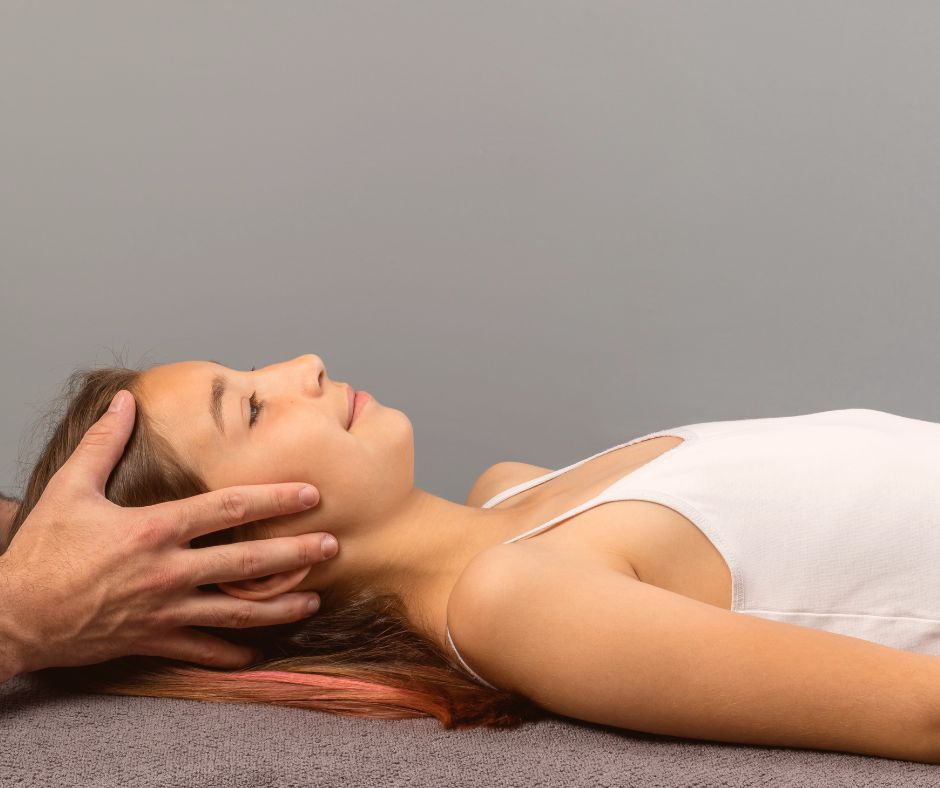Cranial osteopathy: what to expect and benefits
What is cranial osteopathy?
Osteopathy in general is recognised as an allied health care profession in the UK. Cranial osteopathy is a branch of osteopathy which osteopaths can specialise in. Although the principles and objectives of osteopathy and cranial osteopathy are the same, to improve the quality of life, manage symptoms and promote healing, there are few key differences. Cranial osteopaths have a very well-developed sense of touch which is crucial when developing a working hypothesis. Also, the treatment itself differs from ‘normal’ osteopathic treatment as it is very gentle with minimal hand movement.
How does cranial osteopathy work?
By utilising a very well-developed sense of touch, a cranial osteopath is able to feel tensions in the muscles and other tissues, feel if there are any restrictions in any of the joint functions, and feel if bodily fluids are able to flow freely throughout the body. This helps an osteopath to create a working hypothesis and proceed with the treatment addressing the affected areas.
What to expect during a treatment?
Firstly, you will be asked several questions regarding your presenting complaint. This is crucial for your osteopath to understand your symptoms and start painting the picture of the overall presentation. After questioning is complete, your osteopath will proceed to physical examination also known as objective examination. During the objective examination your osteopath might do some observation of your posture in standing before having you lying down on the assessment table. Once you are on the table, an osteopath will use his/her hands to feel for imbalances or restrictions in your body function. Your osteopath will most likely feel your head, spine and sacrum, which is the lowest part of your back.
After the objective examination is complete, your osteopath will discuss the findings with you and suggest an appropriate treatment plan which he/she will proceed to execute only with your consent. With cranial osteopathy, in most cases, the treatment will feel very relaxing and calm. Your osteopath will be gently holding and applying very light pressure on and around your head, spine and sacral area. Also, appropriate lifestyle advice will most likely be suggested at the end of the session.
What cranial osteopathy can help you with?
Although the research of the effectiveness of cranial osteopathy is lacking, it is believed that it can help with a vast range of issues starting from lower back and neck pains and aches, tension headaches and advancing to more serious health conditions such as epilepsy, cancers, diabetes, fibromyalgia and so forth. We do not suggest that cranial osteopathy can cure the latter condition, however, it can help you manage the symptoms caused by those conditions and improve the quality of your life.
What are the side effects of cranial osteopathy?
Because cranial osteopathy is very gentle, there are not many side effects to it. The most common of what you can experience after the treatment would be headache, tiredness, or nauseousness. Side effects usually subside within 12-24 hours after the treatment.
Why try it?
For some, even a medium pressure can be very uncomfortable to handle. Also, some prefer not to be moved too much and like to have a relaxing treatment. If you are one of those individuals, cranial osteopathy might be exactly what you are looking for. Also, if you already tried various alternative therapies and nothing seems to be helping, we would encourage you to try cranial osteopathy as chances for an adverse reaction from the cranial therapy are very low.
Is cranial osteopathy painful?
In short, not at all. As mentioned above, cranial osteopathy is a very gentle and relaxing alternative therapy approach so you can rest assured that it will not be painful. In the worst-case scenario though, you can always communicate to your therapist and let them know if you are in pain.
For further information or contact an osteopath visit: https://www.osteopathy.org.uk/home/
We hope this information is useful for you. If you need advice or have any questions about our treatments, please contact us. You can find us in Mill Hill Broadway and Islington. We are always happy to help.
If you like this blog, please share!



